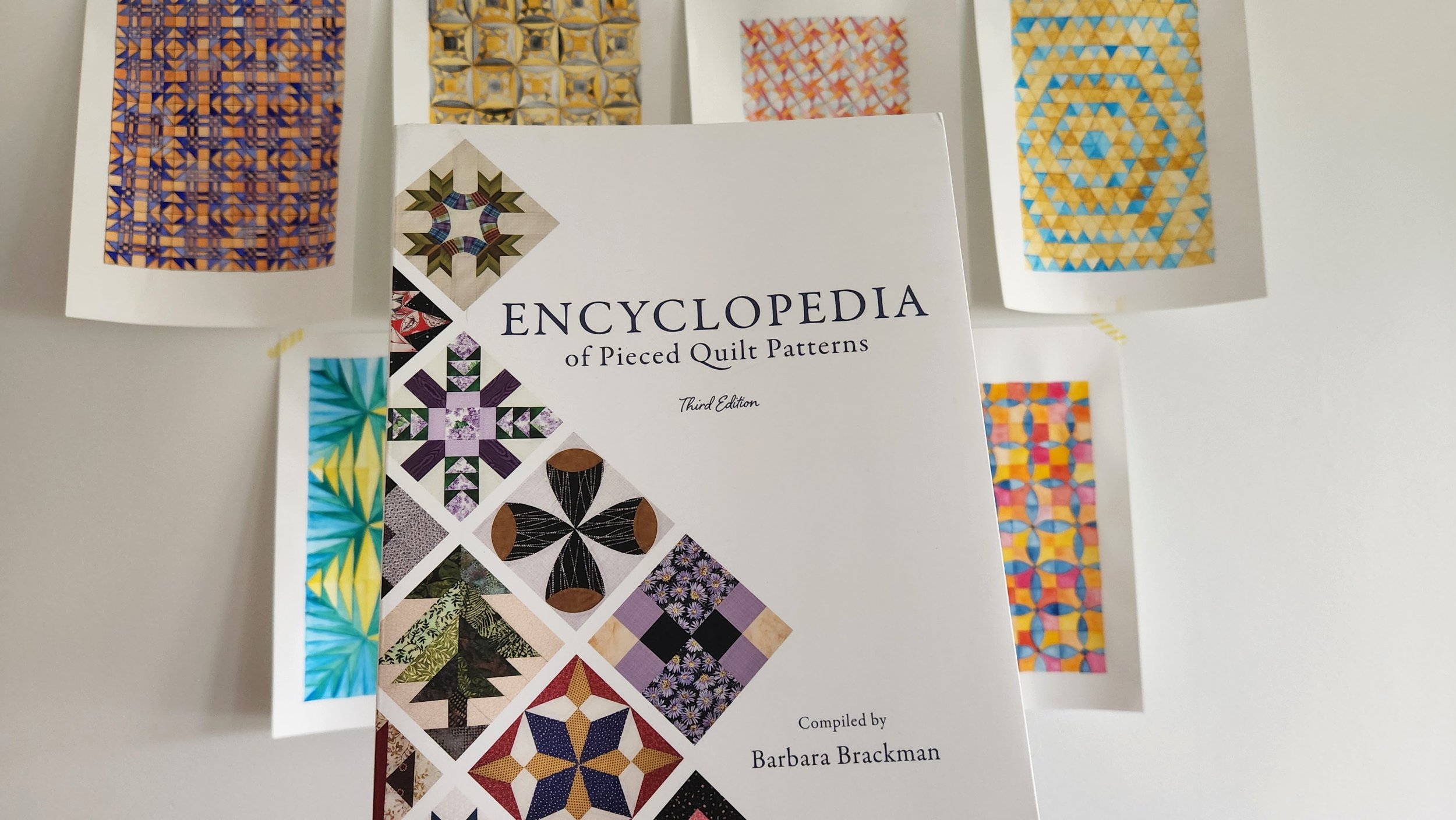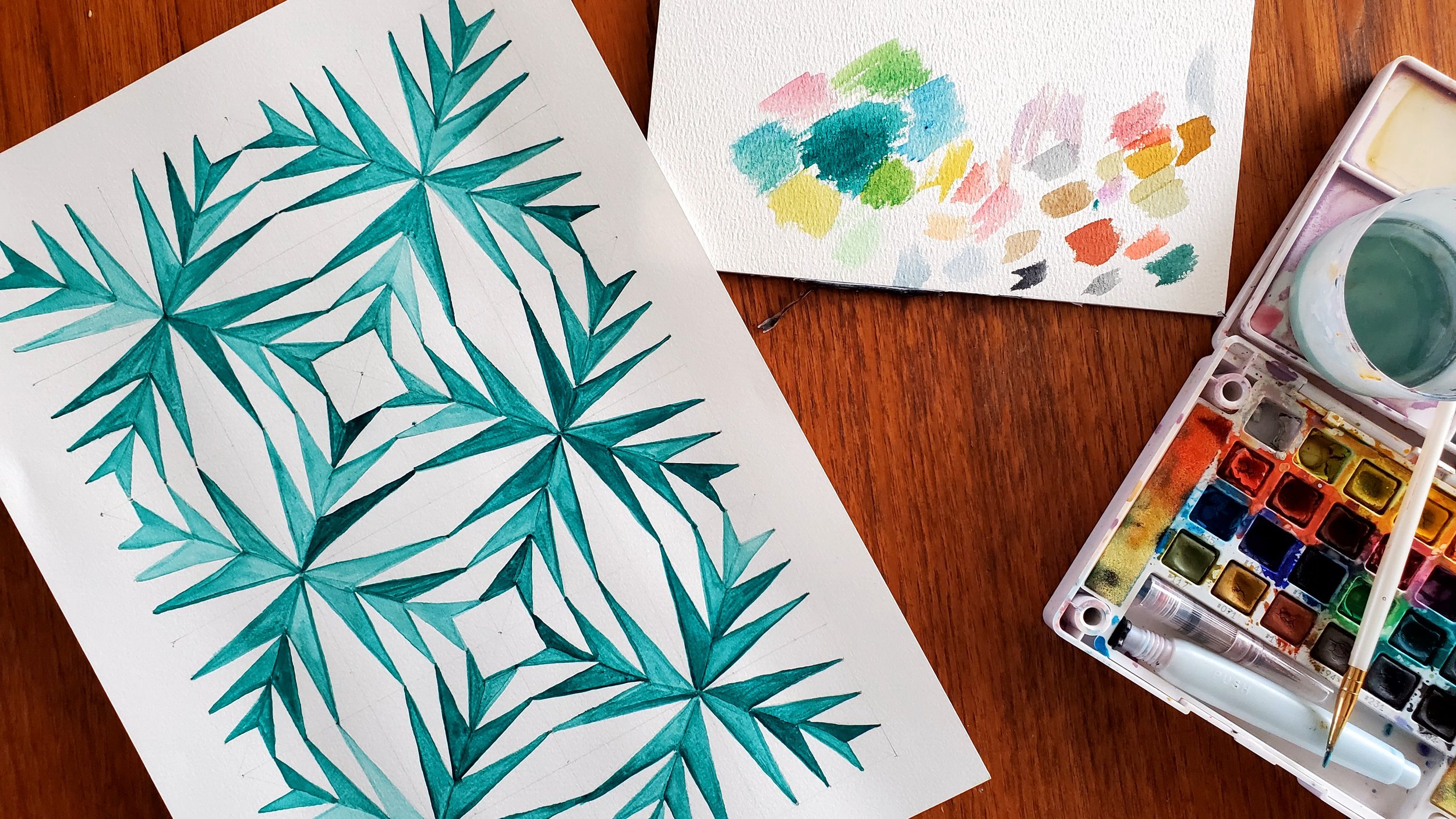I’m not sure what is going on lately, but I have been having some very vivid dreams. It’s happened to me before, but medication was the cause. This time, I have no clue what is happening, but I’m leaning in to it. So when I had a dream about a quilt, I had to make the quilt.
Seriously, I had a dream about a very colourful quilt made from traditional blocks. The block itself wasn’t distinct, but the colour was. That day, when I arrived at the studio I immediately went searching for a potential block. I grabbed a favourite book - Barbara Brackman’s Encyclopedia of Pieced Quilt Patterns - to browse for ideas. Rather, to search for what I might have dreamt about. In the end, I settled on one specific block, which she calls the Crocket Cabin Quilt.
Sadly, my dream wasn’t super specific on the block in question. Or maybe that was a good thing? I mean, what if I didn’t like the block? Regardless, I chose block 1123a, the Crocket Cabin Quilt block. Why? Mostly because it was simple, graphic, and just felt right. The math was pretty easy to figure out as well, considering the block only has half square triangles and plain patchwork.
The first experiments were straight out of the scrap bin. That is, I dug in to the colourful bins on my cutting table and picked two contrasting fabrics. Block 1 was a success so I tried another one, and another. I played around with values, making the dark the bowtie, then making the light fabric the bowtie. I couldn’t decide which I liked better, so I went with both. After only a few blocks it was apparent that I was indeed starting a new quilt.
When I made that decision I also put some limits on my fabric selection. This is primarily to satisfy the vision I had in my dream.
No low volume fabrics
No black backgrounds either
Value is only relative within the block (it doesn’t matter if what is light in one block would be a dark in another)
No repeating fabrics, each one is only used once
There is no special reason for these limits, it’s only just what feels right for me, for this project, for right now. I am shopping for the fabrics from my scrap bins first. I’ve found some classic gems doing this! Of course I have loads of scraps, but they aren’t always big enough. Then I go to my stash and pull out fabrics that might need to be trimmed a little or not. It will not be hard to get enough fabrics without spending a penny.
How big will I make the quilt? My default size is usually 80” x 80”. I made the blocks to finish at 8” square, so that means I will need 100 blocks (and 200 unique fabrics). I’m currently sitting at 43 made, with a few more cut out and ready to sew. I’ve been making 1-4 each day that I am in the studio. No great rush, but it is a nice way to round out my days before returning home.
Dreams really can come true.
















